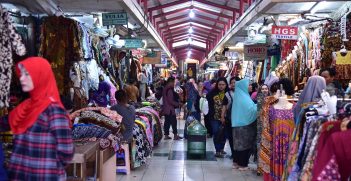Indonesia’s Membership in BRICS: Strengthening Emerging Economies and Elevating the Global South

Indonesia’s inclusion in BRICS enhances the representation of the Global South and strengthens efforts to reform global governance institutions. This move positions the bloc as a stronger platform for collaboration among developing nations.
On 7 January, Indonesia officially joined the BRICS grouping. In welcoming Indonesia, the Brazilian Government issued a statement, saying: “With the largest population and economy in Southeast Asia, Indonesia shares with other members a commitment to reforming global governance institutions and contributes positively to deepening South-South cooperation.” With full membership, Indonesia has become the first country in Southeast Asia to join BRICS. Currently, Thailand and Malaysia are official partners, but not full members. Indonesia’s Ministry of Foreign Affairs in its statement said the BRICS membership is “a strategic step to improve the collaborations and cooperation with other developing nations, based on the principle of equality, mutual respect, and sustainable development.” Economically, this could mean an increase of 0.3 percent growth to GDP, and the expansion of Indonesia’s access to BRICS markets. Geopolitically, it provides Indonesia a bargaining position in the global arena as well as a platform to voice the aspirations of the Global South.
For BRICS, Indonesia’s membership adds another feather to its hat by bringing in greater representation of the Global South to its multipolar vision. This makes it imperative to assess the trajectory of the grouping. What started as an acronym “BRIC,” coined by Jim O’Neill in 2001 in the report “Building Better Global Economic BRICs,” the grouping was projected in the next decade to grow significantly. Founded in 2009 by the four countries—Brazil, Russia, China, and India—the bloc’s first expansion came in 2010 with the joining of South Africa. In the last 16 years, BRICS has graduated from being a popular buzz word in international politics to a significant platform of emerging economies representing the “Global South.”
What is noteworthy is that BRICS is not yet a formal multilateral organisation like the United Nations, World Bank or the Organisation of the Petroleum Exporting Countries (OPEC), but increasingly there has been a greater demand among states (mostly developing countries) to join this club of emerging economies. Despite its informality, what made BRICS relevant in the international order was the 2008 financial crises, which raised scepticism and concerns over the dollar-dominated monetary system. This invariably challenged the effectiveness of the West-led Bretton Woods institutions given the suffering of the United States and Europe in the wake of the financial crisis. In contrast, the BRICS economies showed resilience.
The first BRIC summit was held in Yekaterinburg in 2009, where the Joint Declaration put forward the desire of BRIC countries to develop “an incremental, proactive, pragmatic, open, and transparent dialogue and cooperation” that is “conducive not only to serving common interests of emerging market economies and developing countries, but also to building a harmonious world of lasting peace and common prosperity.” This was reaffirmed at the most recent 16th BRICS Summit held in October 2024 in Kazan. With the indicative expansion of its institutional framework and functionaries since 2009, the most significant outputs have been the New Development Bank (NDB), which provides developmental funds to countries; the Contingent Reserve Arrangement (CRA) with a resource pool of US$100 billion, which provides a mutual support mechanism for short-term balance of payments pressures, enhancing the financial safety net of member countries; and the Strategy for BRICS Economic Partnership 2025 for effective integration of BRICS enterprises into global and regional value chains. A significant milestone was the call, during the 15th BRICS Summit in Johannesburg in 2023, for the expansion of BRICS by inviting new states to join. Another, in 2024, was the deliberation on the formation of the BRICS Cross-Border Payments Initiative (also known as BRICS Pay), where BRICS countries would trade with each other without converting to US dollars by utilising blockchain technology and tokens to circumvent the SWIFT financial payment system. Although BRICS Pay is still only a concept, its development would seriously undermine the US dollar’s long-standing dominance.
Today, the inter-governmental organisation boasts of 10 full members with the inclusion of Egypt, Ethiopia, Iran, and the United Arab Emirates in January 2024, and Indonesia in January 2025; and has nine official partner countries—Nigeria is the ninth partner country of BRICS (admitted on 17 January 2025), joining Belarus, Bolivia, Cuba, Kazakhstan, Malaysia, Thailand, Uganda, and Uzbekistan. Statistically put, BRICS member countries comprise about 45 percent of the world’s population, 28 percent of the global economy, and collectively they produce more than a third of the world’s crude oil. And if Saudi Arabia joins the group (which it is yet to consider the BRICS invitation), the grouping would then produce some 43 percent of global crude oil.
This growth among emerging nations is set to widen the gap between BRICS+ and the G7 nations. As IMF estimates suggest, BRICS+ will account for 37.6 percent of world GDP at purchasing power parity in 2027, compared with 28.2 percent for the G7. This will signify a shift in economic power towards emerging economies, enhance intra-BRICS trade and regional networks rather than relying on G7 markets, and also lead to the creation of alternate alliances and institutions.
Apart from expanding its membership, BRICS has also broadened its agenda beyond economics to include global challenges. The two main pillars of BRICS are practical cooperation in various fields through meetings of Working Groups and Senior Officials, and consultation on matters of shared interests through meetings of Leaders and Ministers of Finance, Trade, Health, Science & Technology, Education, Agriculture, Communication, and Labour, among others. The intra-BRICS collaboration now includes social welfare, intellectual property, tourism, science & technology, culture, outer space, think tanks, and internet governance and security.
With BRICS+, emerging economies are establishing new standards for order making. In other words, despite its informal existence, BRICS has emerged as a strong contestant for building an alternative discourse on global governance—one that is non-western. The expansion gives BRICS a greater economic and demographic weight as well as a stronger voice to the Global South, potentially reshaping discussions in institutions like the UN and WTO. However, the long-term success of an expanded BRICS will depend on its ability to balance diverse interests and act as a unified voice on the global stage.
Dr Amrita Jash is an Assistant Professor at the Department of Geopolitics and International Relations, Manipal Academy of Higher Education (Institution of Eminence), Manipal, India. She holds a PhD in Chinese studies from Jawaharlal Nehru University. She was also a Pavate Fellow at the University of Cambridge and an IAS Visiting Fellow at the Loughborough University. Dr Jash is the author of China’s Japan Policy: Learning from the Past (Palgrave Macmillan, 2023), and The Concept of Active Defence in China’s Military Strategy (Pentagon Press, 2021). She can be reached at: @amritajash
This article is published under a Creative Commons License and may be republished with attribution.





